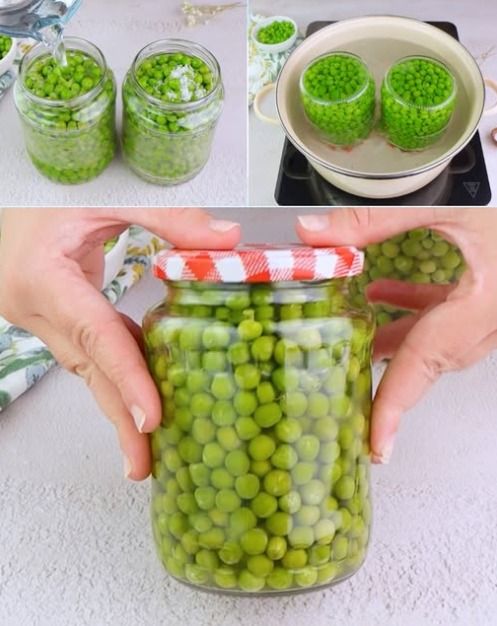ADVERTISEMENT
2. Storing Frozen Peas
If you prefer the convenience of pre-frozen peas, it’s important to store them correctly to maintain their quality:
Step 1: Store in the Freezer
Frozen peas should be kept in the freezer at a consistent temperature of 0°F (-18°C). To maintain their freshness, avoid repeated thawing and refreezing, as this can degrade their texture and flavor.
Step 2: Use Airtight Containers
To prevent freezer burn, store frozen peas in airtight containers or freezer bags. Be sure to squeeze out any excess air before sealing the bag or container. If using a freezer bag, lay it flat so it takes up less space and can be stacked neatly.
Frozen peas can last in the freezer for 6-12 months if stored correctly.
Step 3: Thawing and Using Frozen Peas
There’s no need to thaw frozen peas before cooking them. They can be added directly to dishes like soups, stews, or stir-fries. If you do wish to thaw them, simply place them in a bowl and allow them to come to room temperature or microwave them for a few minutes.
3. Storing Dried Peas
Dried peas, such as split peas or whole dried peas, have an incredibly long shelf life when stored correctly. Follow these tips to ensure your dried peas remain fresh and usable:
Step 1: Store in a Cool, Dry Place
Dried peas should be stored in an airtight container in a cool, dry place, away from direct sunlight and moisture. A pantry or cupboard is ideal. Avoid storing them near heat sources like stoves or ovens.
Step 2: Use Glass Jars or Mylar Bags
For long-term storage, glass jars or vacuum-sealed bags are excellent options. If you have a vacuum sealer, sealing dried peas in Mylar bags with oxygen absorbers can extend their shelf life for up to 1-2 years or more.
Step 3: Check for Pests
Occasionally check your dried peas for any signs of pests, such as weevils. If you find any, discard the contaminated peas, and make sure the storage area is clean and dry.
4. Signs That Peas Have Gone Bad
Even with the best storage methods, peas will eventually spoil. Here are a few signs to watch for:
- Fresh Peas: If the peas have a slimy texture or a sour smell, they have likely spoiled. Additionally, any peas that have turned brown or yellow are past their prime.
- Frozen Peas: If frozen peas have freezer burn (white, frosty patches) or an off smell when cooked, they may not taste as good, though they are still safe to eat.
- Dried Peas: If dried peas have an off odor, visible mold, or insect contamination, discard them immediately.
5. Bonus Tip: How to Extend the Freshness of Peas
If you have fresh peas that you don’t want to freeze but want to extend their freshness, consider pickling them! Pickled peas can last in the refrigerator for several weeks and provide a tangy addition to salads or snacks.
Conclusion: The Best Way to Store Peas
Whether you have fresh, frozen, or dried peas, storing them correctly is essential for maintaining their flavor, texture, and nutritional value.
- For fresh peas, refrigerate them in breathable bags and consume them within a few days or blanch and freeze them for longer storage.
- Frozen peas should be stored in airtight containers to prevent freezer burn, lasting up to a year.
- Dried peas can last for months or even years if kept in a cool, dry place in airtight containers.
With these storage tips, you’ll be able to enjoy peas at their freshest, whether they’re in-season or out of season. So, next time you buy or harvest peas, use these methods to extend their shelf life and enjoy their sweet, nutrient-packed goodness all year round!
ADVERTISEMENT
ADVERTISEMENT
